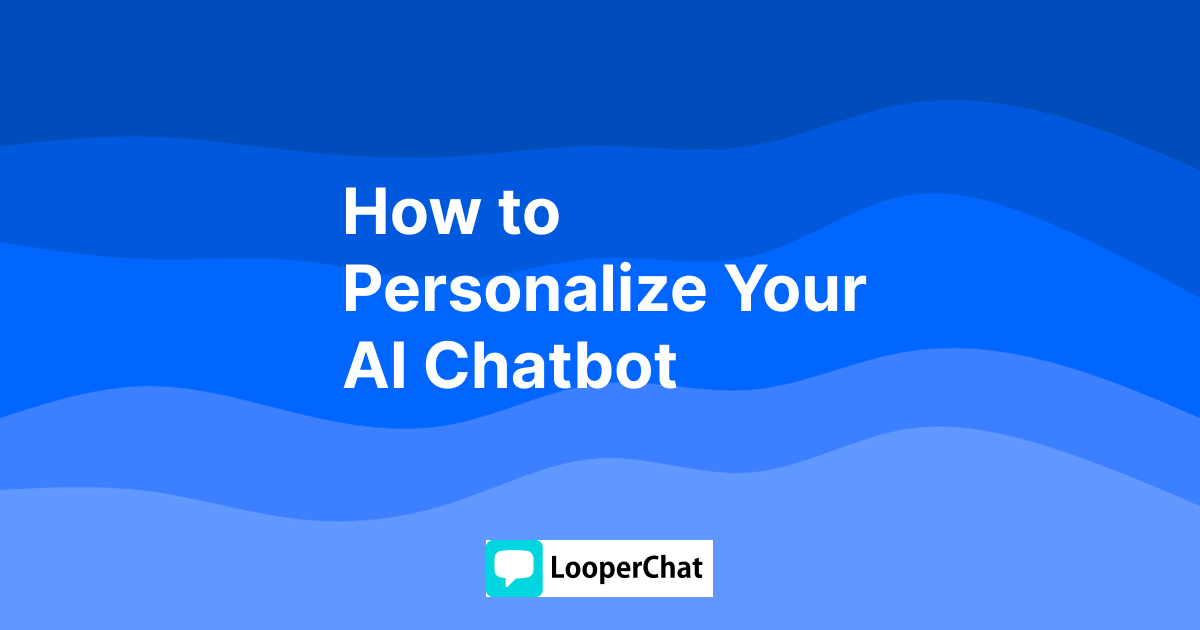How to Personalize Your AI Chatbot
Transfon

Personalization has become more than a buzzword. People expect experiences tailored to their needs and preferences. This expectation extends beyond websites and emails to the very conversations they have with your brand’s chatbot.
But what does it actually mean to personalize a chatbot, and how can brands create these human-like interactions at scale?
We will explore the essence of chatbot personalization, why it matters, and practical ways to implement it effectively.
What Does Personalization Mean for Chatbots?
Personalization in chatbot design goes far beyond inserting a customer brand name into a message. It’s about understanding the context of each conversation, recognising the user intent, and delivering responses that are timely, relevant, and natural.
Imagine landing on a website and the chatbot instantly remembers your last visit, suggests products you recently browsed, or picks up where you left off with a previous support query. This is the power of true personalization: creating an experience that feels connected and continuous rather than starting from scratch each time.
When users sense that your chatbot understands them, it fosters trust. They feel acknowledged, valued, and more confident in engaging with your brand.
Why Personalization Matters More Than Ever
Customers interact with countless brands daily. Generic chatbot scripts are easy to spot and often leave people feeling unheard. On the other hand, a personalized chatbot that adapts its responses, remembers past interactions, and uses language that aligns with the user’s style can stand out in a crowded digital space.
For businesses, personalization isn’t just about creating a warmer experience. It drives measurable outcomes, from higher engagement rates to improved conversions and stronger customer loyalty.
How to Personalize Your AI Chatbot: A Practical Approach
Creating a personalized chatbot experience begins with understanding your users deeply. Start by mapping out their journeys:
- What problems are they trying to solve when they reach out?
- Where do they typically drop off in your existing support or sales flows?
- How can your chatbot provide value in those moments?
Once you’ve mapped these touchpoints, integrate your chatbot with customer data sources. For instance, if someone has an open support ticket, your chatbot should reference it instead of asking them to repeat details. If a visitor browses certain product categories frequently, your chatbot can highlight related new arrivals or promotions.
At LooperChat, personalization goes beyond technical integration. The tone and structure of your chatbot responses should feel like a natural conversation with a helpful human.
Using AI to Enhance Personalization
AI takes personalization to a new level. With AI-powered chatbots, you’re not limited to pre-defined rules or rigid decision trees. Your chatbot can learn from thousands of interactions, understanding nuanced customer intents and adjusting its replies accordingly.
For example, if a user regularly skips detailed explanations and prefers quick answers, your AI chatbot can adapt its future replies to match this concise style. Similarly, it can identify trends in customer questions and proactively provide useful tips or resources before users even ask.
Another powerful aspect of AI is sentiment detection. If a chatbot senses frustration in a user’s tone, it can adjust its language to be more empathetic or escalate to a human agent to resolve the issue swiftly.
Privacy and Personalization: Getting the Balance Right
While personalization creates richer experiences, it must be handled with care. Customers want to feel understood, but not surveilled. Always ensure your data usage is transparent and compliant with privacy regulations. Provide options for users to control what information your chatbot accesses and how it uses that data.
Building trust means showing customers you respect their privacy while using their information to genuinely improve their experience.
First Steps to Personalizing Your Chatbot
If you’re just starting, focus on simple wins:
Begin by ensuring your chatbot can greet returning users by name and recall basic details from previous interactions. Write responses that reflect your brand’s personality and use natural language that feels conversational, not scripted.
As you grow, integrate with your CRM, support platforms, and analytics tools to create more dynamic and responsive conversations. Over time, you can implement advanced AI capabilities to deliver truly adaptive experiences for every customer segment.
Personalization isn’t a feature to check off a list. It’s about creating chatbot experiences that feel human, understanding each customer’s unique context, and communicating with empathy and clarity.
In a world where customers crave authentic connections, brands that use AI to personalise chatbot interactions will stand out not just for the efficiency of their support but also for the genuine relationships they build along the way.
Ready to personalise your chatbot experience and deepen customer connections?